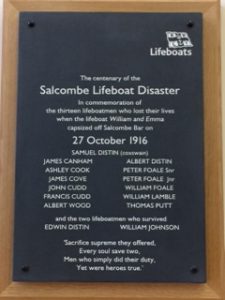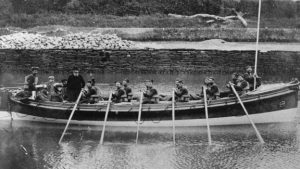
One hundred years ago, early in the morning of 27th October 1916, the Salcombe lifeboat was called out. Fifteen men ran from the town to South Sands to launch the William and Emma into a turbulent sea. The call turned out to be unnecessary as the ship they went to rescue was blown ashore, but vital messages to inform the lifeboat crew of this fact did not get through because some telephone lines were down; and it was many hours later that the lifeboat crew, cold wet and tired, attempted to return to Salcombe in ever-worsening conditions. The bar at the entrance to the harbour is a well-known hazard, particularly towards low tide; and battling into a Force 9 gale and ferocious seas, the lifeboat was flipped over by a gigantic wave, with the result that 13 of the 15 men on board perished. Many of the crew’s families and friends were watching in horror from the cliffs, unable to do anything to avert the catastophe.
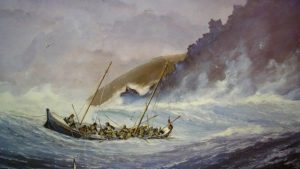
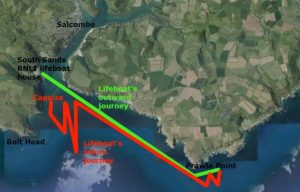
The men clung onto the upturned hull for as long as they could, but subsequent waves washed them off and out of reach of the boat. The two survivors, Eddie Distin and Bill Johnson, were rescued with ropes from where they were clinging onto rocks a little further along the coast. Five of the bodies of other crew members were found, but the remainder never emerged. Salcombe was used to loss, as this was during the First World War and many young men had already lost their lives; but the scale and immediacy of this disaster plunged the town into deep grief and mourning.
In 2016, one hundred years to the day and the hour of the disaster, people from the area turned out in force to commemorate the event. There was a church service in Salcombe, followed by a procession of almost 100 boats of all shapes and sizes, to where the lifeboat perished, in order to ‘lay’ a wreath in the water. The flotilla included three current and three decommissioned lifeboats, as well as pleasure craft and fishing boats. An Air Sea helicopter hovered overhead, and thirteen shots were fired, in respect for the thirteen men who lost their lives.
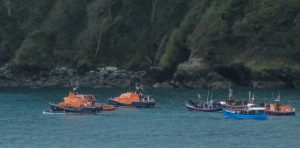
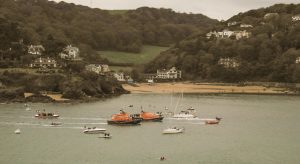
We stood on the clifftop watching the ceremony and casting our minds back a century to men long dead. The day could not have been more different, as the sun was shining brightly and the calm sea glittering with silver and gold. The scene below us was poignant and evocative, and there were signs of tears on some of our faces.
Does it make sense to weep for men who died so long ago, and whom we never knew? Yes, I think so. The lifeboat men of today are in a direct line from these courageous men, and they still go out in all conditions to help those in distress. I was at a party in Salcombe a few years ago when a ‘shout’ went up. Without a moment’s hesitation, half the men in the room put down their (non-alcoholic) drinks and walked calmly out of the door and down to the lifeboat house. We saw the modern lifeboat leaving the harbour a few minutes later.
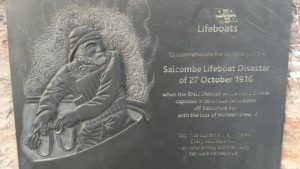
This plaque is in Salcombe parish church, and commemorative stones will soon be laid on the coast path to mark the spot below which the disaster unfolded. If you would like to learn more about this tragic event, there is a book about it by local historian Roger Barrett who is Curator of Salcombe Lifeboat Museum and former Station Manager at the Prawle Point National Coastwatch Station. The book is published by Salcombe Lifeboats at £7.99.
A further plaque in honour of the men was dedicated by the Bishop of Plymouth during the church service this morning.
